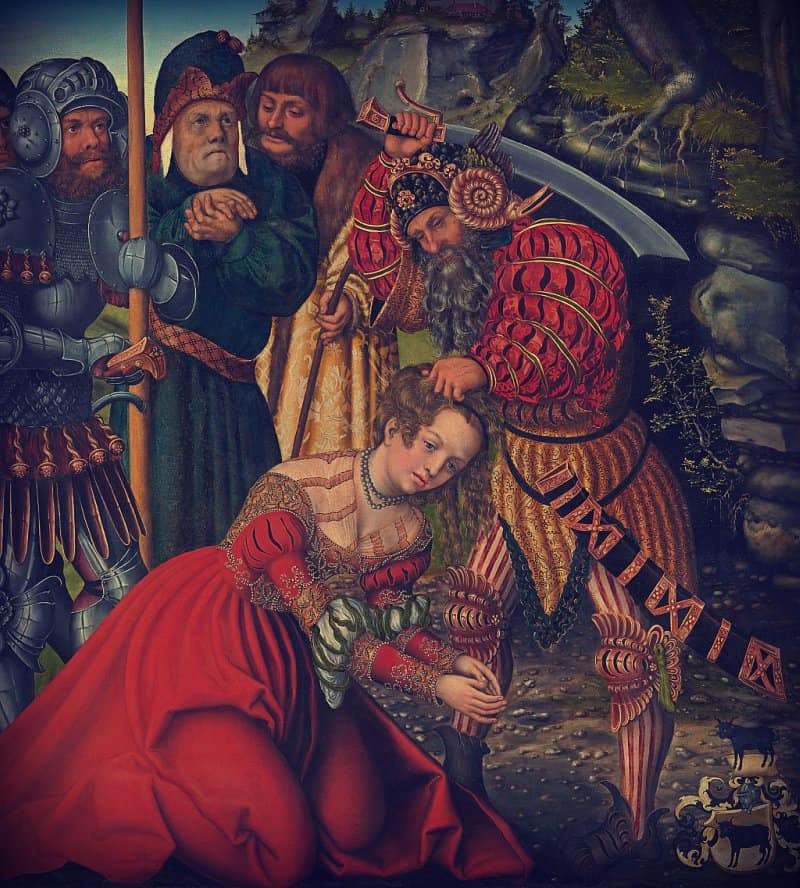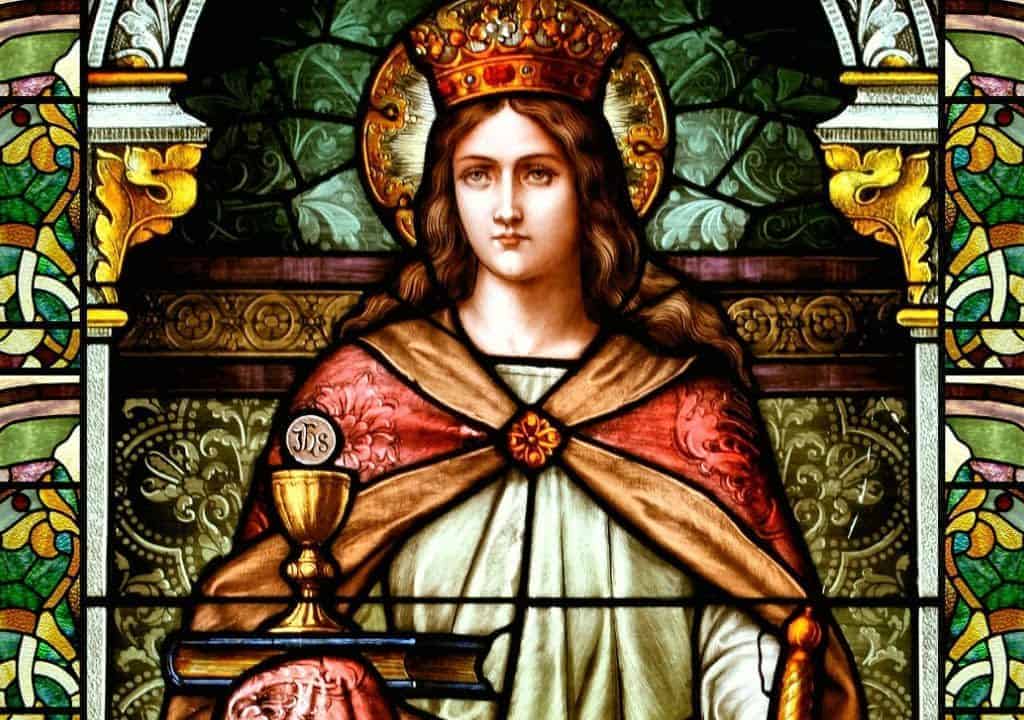With a single blow, Dioscoro cut off his own daughter’s head

Her father, “Dioscoro”, declared to everyone: “I am her father and I do not want her to die in hands other than mine”, before unsheathing his sword and cutting off his own daughter’s head with a single blow, as he had done numerous times in battle when executing prisoners.
Apparently, in her last words, Barbara prayed to God for those who had caused her pain, according to one of the people in the room.
After these incidents, just as “Dioscorus” was about to leave for home and Praetor “Marcian” was still in the courtroom, a completely clear and intensely blue lightning bolt fell from the sky, instantly fulminating both “Dioscorus” and Praetor “Marcian” himself.
Everyone present at the scene of the crime was forced to flee as a result of this event and the inhabitants of the city experienced a terrifying wave of panic as they felt complicit in a murder that should never have happened and that no one did anything to prevent.
However, Barbara’s problems did not end with her death because, according to the laws of the time and place, her body could not be buried and had to be thrown into the sea or abandoned in a rural area where birds of prey would devour it.
At that time, a devout nobleman the time named “Valenciano” stepped forward and, posing as a high government official, was able to seize the body and transport it to the city of “Gelasio”, where it was buried according to local Christian custom.
The laws were stringent because the Roman Empire did not want the bodies of people who practiced religions other than paganism and had died defending their faith to be taken by the followers of those doctrines to worship them as martyrs in the place where they were buried. This could have cost “Valenciano” his life.
First, her remains were taken to Constantinople
At the end of the 9th century, after being buried in “Gelasius”, her remains were first transported to Constantinople and placed there in a church that had been built in her honor by Emperor “Leo”. After 991, she was taken to Italy, specifically to “Venice”, to the church of the “Society of Jesus”.
Both the Greek Orthodox Church and the Roman Catholic Apostolic Church venerate Saint Barbara as a saint. According to legend, her friend Juliana was also crucified with her and many miracles were performed at her tomb.
Ancient tradition further states that St. Barbara’s last prayer was that God would bless and support all those who remembered her martyrdom.
Her relics from Constantinople are found in Torcello, as already mentioned.
The oldest documents, dating back to 1009, attest to this. However, both the Ukrainian city of Kyiv, already within the Orthodox sphere and the Italian city of Rieti claim to behave body of the Saint.
According to one of the Latin texts, the inhabitants of Rieti declare that Barbara was martyred in nearby Scandriglia.
The Orthodox of Kyiv also supports this claim, asserting that Prince Michael Izyaslavitch brought the body directly from Constantinople and left it in the cathedral of St. Vladimir, where it is still venerated.
In other words, who has the real body of the Saint? Torcello is very likely to be the most logical choice. Finally, we present the lyrics of the posthumous Hymn to Saint Barbara by D. Antonio Oller y Fontanet, which was written for the Artillery Corps in 1877.
Hymn of Saint Barbara
Grant, O Virgin, to the death of the gallant artilleryman who resolutely protected the cannon.
Shelter, comfort and pardon offer thee always the sublime and pious.
In your solarium, which is embroidered with the stars of your children, you who appease the fierce squall and the thunder, you listen to their voices.
And it was for your glory, which shines more radiant and purer than the sun, that one day we made you Patroness of the brave Spanish Artillery.





